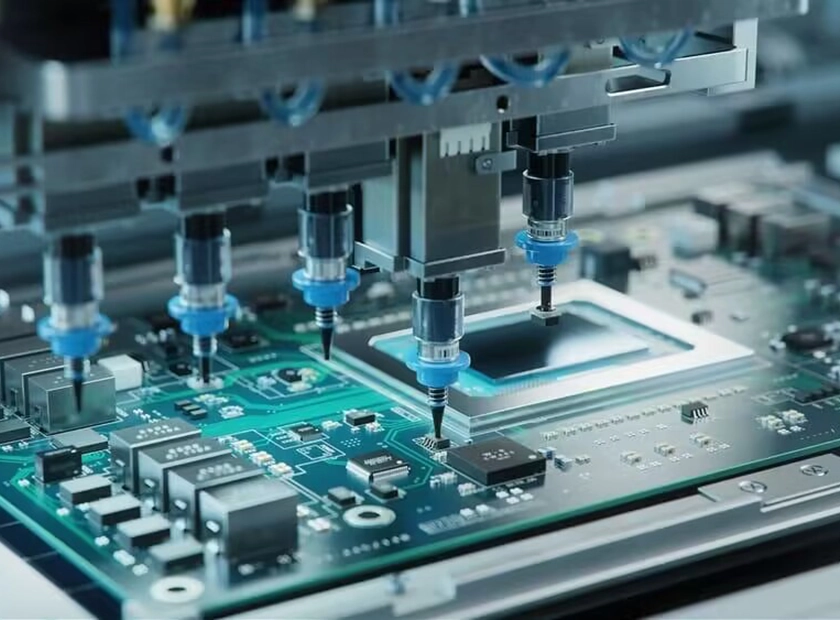Impact of Electroless Copper Quality on PCBA Reliability

In the complex manufacturing process of Printed Circuit Boards (PCBs), the electroless copper plating process, also known as Plated-Through Hole (PTH), serves as the foundational step for establishing Z-axis electrical interconnection. The objective of this process is to deposit a uniform, dense, and well-adhered conductive copper layer onto the insulating hole-wall substrate. This initial copper layer is the conductive seed layer for subsequent electrolytic copper plating. Although this process occurs early in the manufacturing chain, any deviation in its quality is directly propagated to the final Printed Circuit Board Assembly (PCBA), manifesting as yield loss, performance degradation, or latent reliability risks.
Direct Electrical Integrity Failure
The most immediate impact of poor electroless plating is a direct failure of electrical integrity, which is typically exposed during In-Circuit Testing (ICT) or Functional Circuit Testing (FCT). The primary manifestation is an open circuit caused by the formation of hole-wall voids. Factors such as incomplete removal of drill smear, the presence of air bubbles, or contamination of the chemical solution can prevent copper from depositing on certain areas of the hole wall. The impact on the PCBA is that a via or component hole with a void has a completely broken electrical connection. When this PCB is assembled, the PCBA is identified as a non-conforming unit, often classified as Dead on Arrival (DOA), resulting in significant material and manufacturing cost losses.

Microsection PCB
Latent Reliability Risks
More insidious are the latent reliability risks, where microscopic defects may not be detected by standard tests but can evolve into catastrophic failures after the PCBA undergoes thermal stress or long-term service.
-
Thermally Induced Interconnect Failure
This risk stems from the significant Coefficient of Thermal Expansion (CTE) mismatch between the PCB substrate and the copper plating. This mismatch subjects the plated copper in the hole barrel to immense tensile stress during thermal cycles. If the copper's ductility is insufficient, failure modes such as barrel cracking, corner cracking, or inner-layer separation can occur. These micro-cracks may gradually propagate throughout the product's lifecycle, ultimately leading to a field failure, which is unacceptable for high-reliability applications like automotive, medical, or aerospace electronics.
-
Plating Adhesion and Solderability Issues
Poor plating adhesion presents another significant latent risk. If pre-treatment steps like conditioning and catalysis are improperly executed, the bond between the copper layer and the hole-wall resin will be weak. This defect becomes apparent during soldering processes, especially wave soldering. The rapid heating can cause residual moisture in the substrate to vaporize, and if adhesion is poor, this high-pressure gas can delaminate the plating and escape through component holes, forming "blow-holes," which severely compromises the formation and quality of the solder joints.

Magnifying Glass Circuit Board Checking
Electrical Performance Degradation
Even in the absence of a complete open circuit, sub-par electroless copper quality will degrade the PCBA's electrical performance in two critical areas.
-
Signal Integrity (SI) Degradation
Non-uniform thickness of the copper layer causes the actual geometry of the via to deviate from its design model. For high-speed signals like DDR or PCIe, this creates impedance discontinuities, leading to signal reflections, increased insertion loss, and mode conversion. Ultimately, this manifests as a degraded eye diagram, increased jitter, and a higher Bit Error Rate (BER), causing the PCBA to operate in a marginal state highly sensitive to environmental changes.
-
Power Integrity (PI) Compromise
The current-carrying capacity (ampacity) of a via is directly related to its copper cross-sectional area. Insufficient plating thickness increases the via's DC resistance. In power paths carrying high currents, this leads to a significant voltage drop (IR drop) and power loss. According to Joule's law (P = I²R), this results in localized overheating of the via, which not only reduces power efficiency but can also become a hotspot that accelerates the aging of surrounding materials and components, potentially posing a safety hazard.
From this analysis, it is evident that the quality of electroless copper plating, though established early in the PCB manufacturing process, exerts a comprehensive and far-reaching influence on the final PCBA. It not only determines the fundamental production yield but also directly governs its long-term reliability by affecting its structural stability under thermal stress. Concurrently, it dictates the PCBA's performance in high-speed and high-current applications by influencing its electrical parameters. Therefore, in supply chain management and quality control, the stringent evaluation and validation (e.g., through micro-section analysis) of a PCB supplier's electroless plating capability is a non-negotiable and critical aspect of ensuring the high quality and reliability of the final electronic product.
